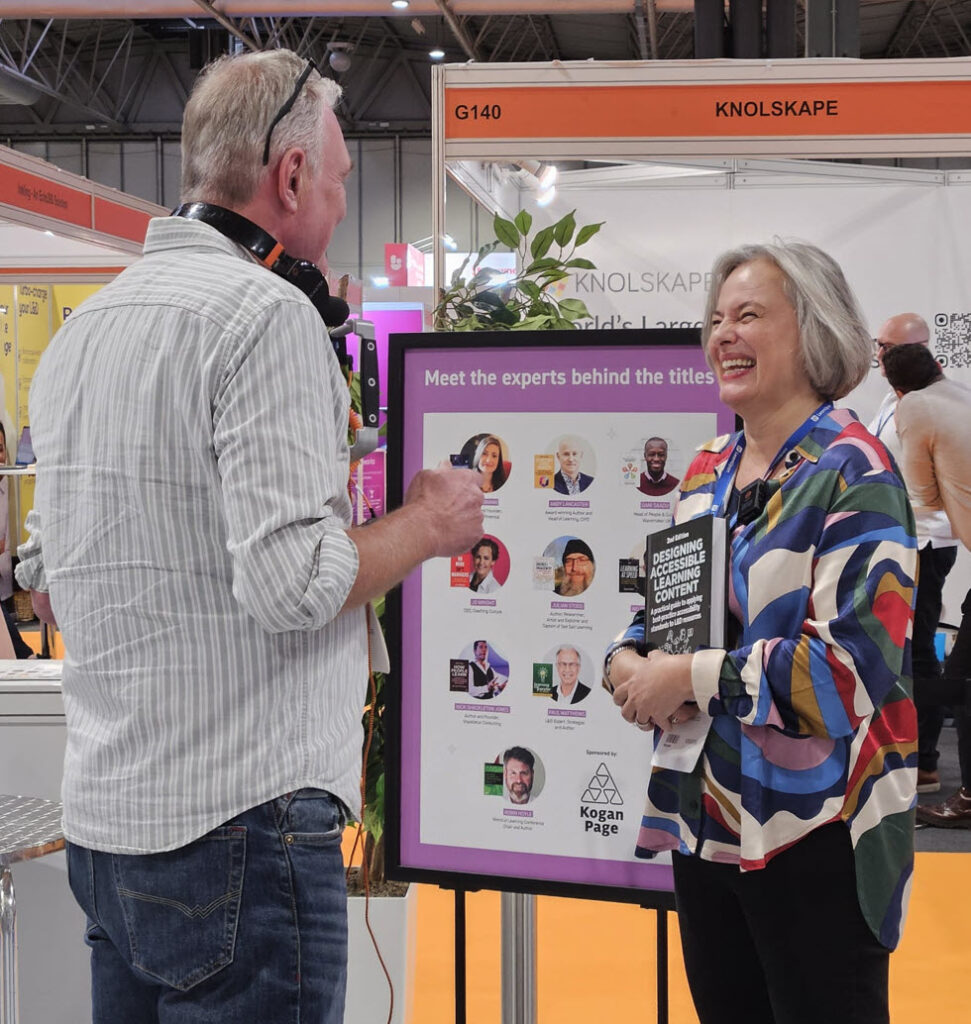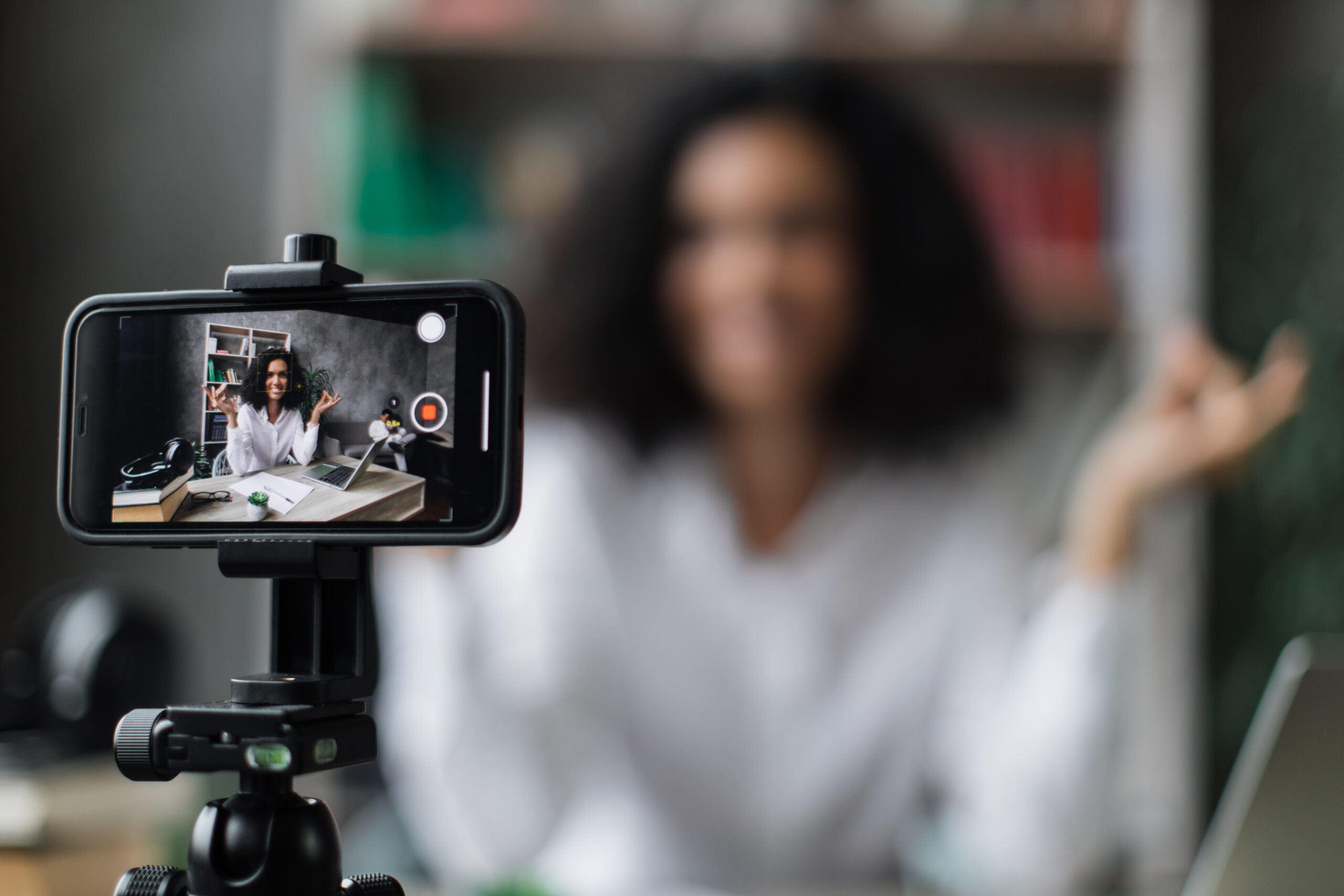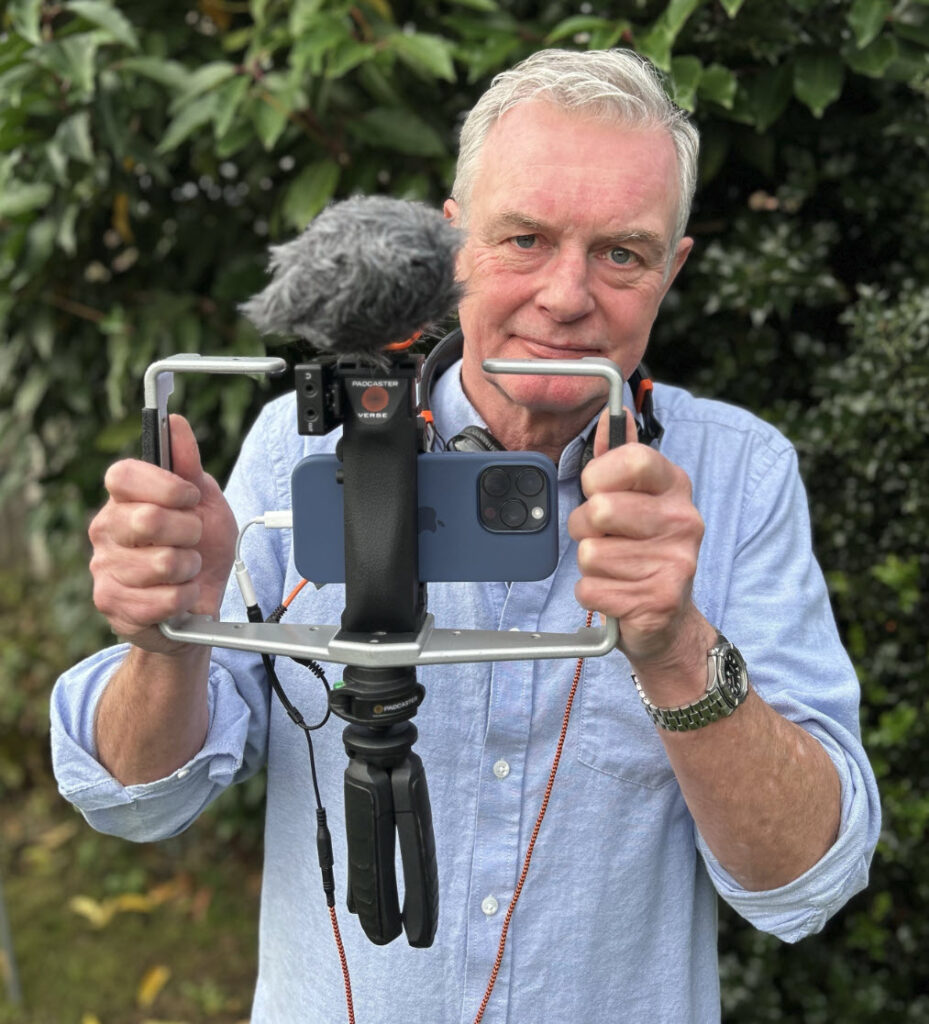Convenience meets quality with fast, discreet, powerful video on smartphones for your next learning intervention – Kevin Davids shares his approach and why he filmed World of Learning 2024 with a mobile device
“The best camera is the one you have with you” is often attributed to Chase Jarvis from his 2009 book, where he included photos captured with an early iPhone. Since then, technology has evolved in leaps and bounds, making this quote truer today than ever before. That’s why, when asked to create a video for TJ at World of Learning 2024, I grabbed my iPhone 16 Pro.
I’m not alone in using mobile technology
I almost exclusively film for clients using iPhones. Other smartphones are just as capable, but my personal preference is the iPhone due to its seamless compatibility with my Mac-based editing workflow. I film on my phone, Airdrop (wirelessly send files) to my Mac, edit and produce with Camtasia.
If it’s good enough for the BBC..!
For me it’s quick and simple, yet as a professional content creator, I’m not alone in using mobile technology. In fact, most broadcast media have been on board for some time. BBC journalists have been using iPhones for filming since 2018 and footage has aired on their flagship six and ten o’clock news programmes, completely undetectable as content filmed with a pocket-sized device.
At World of Learning, I filmed Jo Cook, a natural in front of the camera. But not every interviewee is that comfortable. In fact, many people get a bit camera-shy when faced with a big lens. This is where smartphones come in. They’re an everyday object, something we’re all used to. Most of us have filmed friends or family with a phone at some point so it’s far less intimidating than having a huge camera set-up in your face. I was far more confident of people being relaxed as I walked around the event with just a phone held in a simple rig to stabilize the image.
There’s another reason why I prefer using iPhones: the range of filming apps available that let me turn this everyday device into a professional-grade tool. Apps like BeastCam, FiLMiC Pro, and Padcaster Pro offer the same level of control you’d expect from an expensive DSLR, but they operate with the familiarity of a smartphone interface. I’ve found them easy to learn, fairly intuitive, and well-suited to both the beginner and professional use.
Why iPhones are my go-to filming gear
Whenever I embark on a professional project, I make sure to explain why I use an iPhone:
- Portability and accessibility: Smartphones are lightweight and easy to carry, which enables me to capture footage quickly in fast-moving or unexpected situations. This is particularly useful at events, exhibitions, and conferences, where a larger camera setup might be impractical.
- Clear audio devices: For World of Learning 2024, I used wireless lapel mics. They’re compact, provide clear audio, and help streamline the process. When I only have a few minutes to shoot an interview and need to quickly skedaddle, wasting time faffing with cables isn’t an option.
- Discreet filming: When you’re filming in environments where a large camera might draw unwanted attention, an iPhone is an ideal solution. I’d rather not be noticed at all. It’s an everyday device—there’s nothing intimidating or intrusive about it.
- Quality improvements: Modern smartphones, especially iPhones, have come a long way in camera quality. Today, they can shoot in 4K resolution, offer high dynamic range (HDR), and feature advanced image stabilisation. These advancements make smartphones a totally viable choice for professional video production.
- Cost-effectiveness: For organisations, using smartphones can be a clever, cost-effective solution. While traditional cameras offer greater control over certain technical elements, the practicality and lower cost of smartphones often outweigh those advantages, particularly for quick-turnaround projects.
- Apps and post-production efficiency: With smartphones I can shoot, edit, and share content all on the same device should I wish. This capability streamlines the production process, which is so important in fast-paced environments like live events.
- Hardware accessories: There’s a range of helpful hardware accessories to elevate the experience. For instance, I never shoot without an external microphone. Quality audio is essential because there’s only so much that can be salvaged from bad audio in post-production. Though, I have to admit, AI is starting to make strides in that area.

Get filming
The tools at our disposal are constantly evolving, prices are becoming more accessible and the future of content creation is shifting with them. It makes events, interviews, resources, activities and introductions for training so much easier for almost everyone to be able to achieve.
For me, using an iPhone isn’t just about convenience—it’s about being adaptable, discreet, and able to deliver professional-quality results with minimal fuss. After all, the best camera really is the one you have with you.
Kevin Davids is a smartphone videographer, trainer and Co-founder of Raiveon





